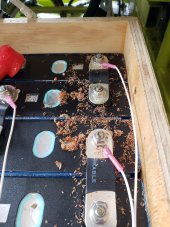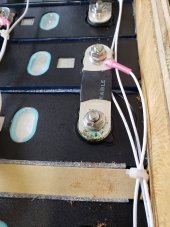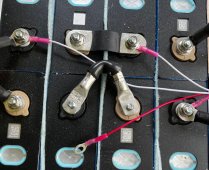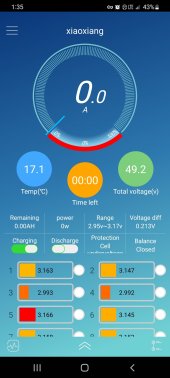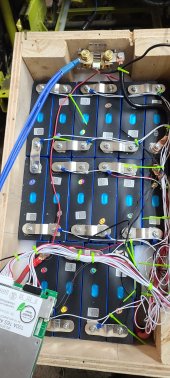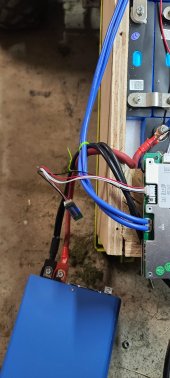Sunday afternoon I was mowing the lawn for the 4th time and lost all power. When it quit the meter on the mower was showing 47.9 volts, 69.98AH capacity, and 46.0%. I checked the main fuse on the mower and it was still good. There were no loose wires or obvious signs of problems. I opened the BT app for the BMS and it showed 0% capacity, the voltage matched the 47.9 on the meter. The lowest cell was just under 2.9vdc and the highest just over 3.1vdc. Temperature on the 3 sensors average about 87°F.
I got the mower back up to the house and plugged in the AIMS charger but it wouldn't charge. The charger wouldn't even start, no LED indicators lit up on it. I pulled the battery pack and opened the box to see if there was any visible signs of problems. I can't see anything wrong, no loose wires, no loose nuts, nothing burned, no smell of burning. It looks just like it did when I put it in the mower.
Today when I went out to dig into it more, the meter was now 49.24VDC, 68.94AH, and 46%. It still doesn't charge though. I even connected the BMS leads to the charger to bypass anything on the mower that might be causing a problem. Still it doesn't charge.
The log data from the app doesn't show any red notes that would indicate a reason why it shut down. I did find in the parameter settings the cycle is set to 80AH which is probably why it shutoff at 69.98AH remaining, given my pack is 150AH total capacity.
So I can't find anything wrong, there's no indications in the BMS log of any errors.
The only thing I can see for why it quit was that it dropped below 70AH capacity. But why won't it charge now?
Any suggestions would be helpful.
View attachment 94010
View attachment 94013View attachment 94014



